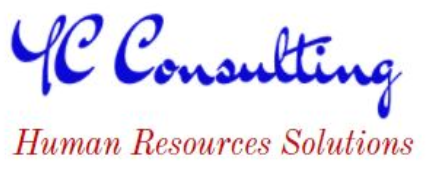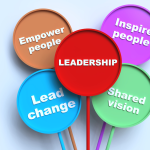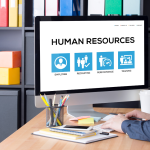The COVID-19 epidemic has sparked a period of fast change, and people, organizations, and communities worldwide are dealing with an overwhelming amount of pressing leadership concerns. We must make a swift shift in the face of this disruption or risk falling behind.
Leaders widely recognize the value of culture; in fact, the term has taken on some notoriety. However, they might not realize that once-essential elements of company culture may be hindering their growth. Assumptions, habits, behaviors, and processes are incorporated into business decisions and routine encounters. It might be hard to see and alter when something like this stops working.
To transform workplace culture, executives must challenge ingrained assumptions, “unlearn” prior knowledge and reimagine their company cultures through audacious acts.
Availability of remote and hybrid jobs
In order to create the best possible combination of hub, home, and hybrid work arrangements, companies’ remote work strategies should be developed with input from various stakeholders, including operations, IT, HR, and real estate.
For instance, to decrease the real estate footprint and related expenditures, real estate may choose a larger utilization of home and hybrid arrangements. On the other hand, HR and operations might realize that particular sorts of work need to be better suited for these arrangements and urge for increased use of hub arrangements. Ultimately, businesses will be better off evaluating these many concerns and perspectives.
One step at a time
What will be most crucial to our future success, one step at a time? Think about the five uplifting themes. Which are our top priorities, exactly? Choose the habit that will benefit you most from the two or three that you can identify. Come back and work on a different project after the group or organization has mastered the first one.
Plan to fail
Be prepared for the possibility that good intentions will falter, other priorities will arise, or old habits will resurface. Encourage teams to implement all the success-promoting tools, such as visual reminders and diary notifications. People will be held accountable and see the early benefits with the help of organization-wide support mechanisms like messaging, celebrations, “cheerleaders,” or coaches.
Increased digitalization
Virtual collaboration tools, robotics and artificial intelligence (AI) augmented, and virtual realities, analytics, blockchain, cryptocurrency, and similar technologies will continue to be adopted.
Network analysis and automation are starting to be used by organizations. The beauty of Teams, Zoom, or any other collaborative technology is that HR can use the data generated to evaluate how much time and with whom people interact, providing a greater understanding of networks within a company and how collaboration is enabled.
More focus on employee wellbeing
A wider focus on employee wellness has emerged due to the epidemic, which calls for benefits solidly built across the four pillars of physical, emotional, financial, and social welfare. The total employee experience, achieved through culture, successful leaders, and managers, will also receive more attention. Most employees report feeling more stressed and disconnected from working from home. While people are more productive as they work more hours, they are also becoming increasingly exhausted.
The COVID-19 epidemic has sparked a period of fast change, and people, organizations, and communities worldwide are dealing with an overwhelming amount of pressing leadership concerns. We must make a swift shift in the face of this disruption or risk falling behind.
Leaders widely recognize the value of culture; in fact, the term has taken on some notoriety. However, they might not realize that once-essential elements of company culture may be hindering their growth. Assumptions, habits, behaviors, and processes are incorporated into business decisions and routine encounters. It might be hard to see and alter when something like this stops working.
To transform workplace culture, executives must challenge ingrained assumptions, “unlearn” prior knowledge and reimagine their company cultures through audacious acts.
Availability of remote and hybrid jobs
In order to create the best possible combination of hub, home, and hybrid work arrangements, companies’ remote work strategies should be developed with input from various stakeholders, including operations, IT, HR, and real estate.
For instance, to decrease the real estate footprint and related expenditures, real estate may choose a larger utilization of home and hybrid arrangements. On the other hand, HR and operations might realize that particular sorts of work need to be better suited for these arrangements and urge for increased use of hub arrangements. Ultimately, businesses will be better off evaluating these many concerns and perspectives.
One step at a time
What will be most crucial to our future success, one step at a time? Think about the five uplifting themes. Which are our top priorities, exactly? Choose the habit that will benefit you most from the two or three that you can identify. Come back and work on a different project after the group or organization has mastered the first one.
Plan to fail
Be prepared for the possibility that good intentions will falter, other priorities will arise, or old habits will resurface. Encourage teams to implement all the success-promoting tools, such as visual reminders and diary notifications. People will be held accountable and see the early benefits with the help of organization-wide support mechanisms like messaging, celebrations, “cheerleaders,” or coaches.
Increased digitalization
Virtual collaboration tools, robotics and artificial intelligence (AI) augmented, and virtual realities, analytics, blockchain, cryptocurrency, and similar technologies will continue to be adopted.
Network analysis and automation are starting to be used by organizations. The beauty of Teams, Zoom, or any other collaborative technology is that HR can use the data generated to evaluate how much time and with whom people interact, providing a greater understanding of networks within a company and how collaboration is enabled.
More focus on employee wellbeing
A wider focus on employee wellness has emerged due to the epidemic, which calls for benefits solidly built across the four pillars of physical, emotional, financial, and social welfare. The total employee experience, achieved through culture, successful leaders, and managers, will also receive more attention. Most employees report feeling more stressed and disconnected from working from home. While people are more productive as they work more hours, they are also becoming increasingly exhausted.
Additionally, when individuals spend more time in front of laptops, they grow disengaged and distracted. Depending on their field of work, individuals can also worry about what the future holds, and their productivity might suffer.
Additionally, when individuals spend more time in front of laptops, they grow disengaged and distracted. Depending on their field of work, individuals can also worry about what the future holds, and their productivity might suffer.






